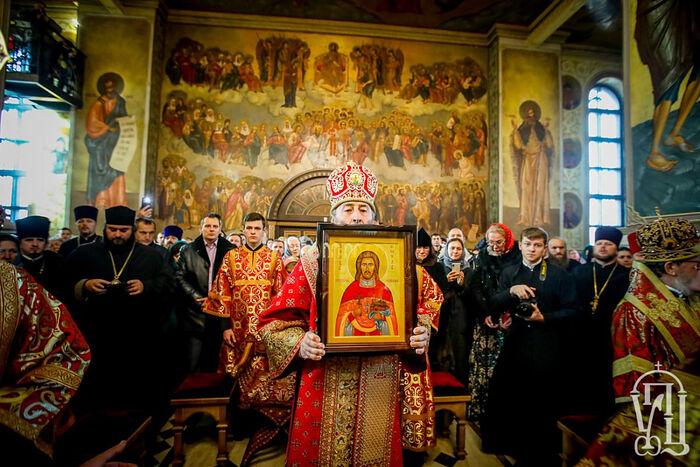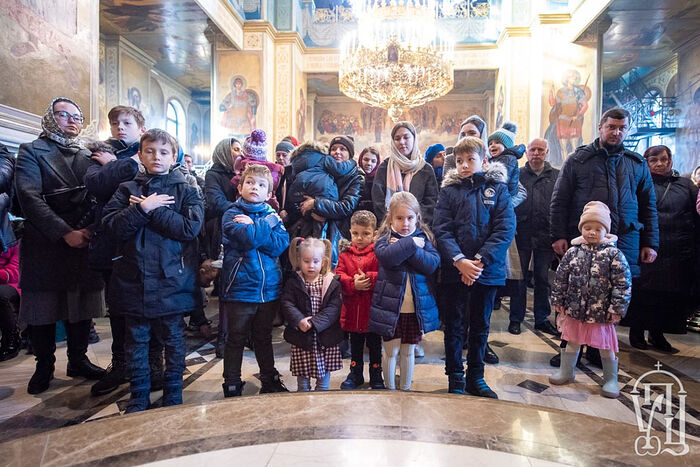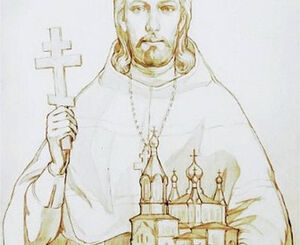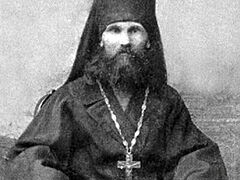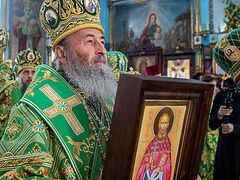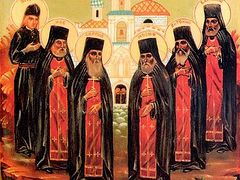Boryspil, Ukraine, November 21
On August 17, the Holy Synod of the Ukrainian Orthodox Church canonized five ascetics of piety, including Hieromartyr Mikhail Podelsky, who was martyred for his faith by the godless communists in 1937. His feast was established as November 27, the day of his martyrdom.
Yesterday, His Beatitude Metropolitan Onuphry of Kiev and All Ukraine led the liturgical glorification of St. Mikhail, together with more than 30 other hierarchs of the Ukrainian Church. The Divine Liturgy with the rite of glorification was celebrated at Holy Protection Cathedral in Boryspil, reports the Information-Education Department of the Ukrainian Orthodox Church.
After the Small Entrance, the rite of glorification was held. According to tradition, the final memorial litiya was served, then the secretary of the Ukrainian Church, His Eminence Metropolitan Anthony of Boryspil, read out the Synodal decision on the canonization of St. Mikhail. Then the life of the saint was read out, followed by the singing of his troparion, kontakion, and magnification, and the veneration of his icon.
Following the reading of the Holy Gospel, the Ukrainian primate offered an archpastoral word, urging his flock to offer God the fruits of a pious and holy life. One such beautiful fruit of the Church is the Hieromartyr Mikhail, he emphasized.
Prayers were also offered for the previous Ukrainian primate, His Beatitude Metropolitan Vladimir, on the occasion of the 86th anniversary of his birth.
Following the service, Met. Anthony presented Met. Onuphry with an icon of the newly-glorified saint.
***
St. Mikhail was born on May 21, 1878 in Nizhyn, in the Chernigov Governorate, in a family of priests and clergy. Mikhail was the fifth of seven children.
The future martyr learned to read in church, then continued his education at the Chernigov Theological School. On January 2, 1906, he became the head psalmist at a local church, and from there began his gradual formation as a cleric.
His further ministry from 1911 is not precisely known, though it is known he was ordained to the diaconate before 1917. During the terrible times of persecution that then came upon the country, St. Mikhail felt called to the priesthood, being ordained in 1925. He served in several parishes, and always maintained loyalty to the canonical Church during a time of schisms and divisions.
Fr. Mikhail was concerned first and foremost for the purity of the faith, the worthy celebration of the Sacraments, and sacrificial Christian love, which greatly irritated the Soviet authorities. In 1930, he was arrested for “counter-revolutionary activities,” but wasn’t convicted.
In 1935, Fr. Mikhail’s church was closed. A strong community rallied around him as a true shepherd and fought for the reopening of the church. They were unsuccessful and their efforts further turned the local authorities against Fr. Mikhail. However, Fr. Mikhail continued to serve in private homes.
The authorities regarded his liturgical gatherings as anti-Soviet rallies, and branded St. Mikhail “an implacable enemy of the Soviet government.”
St. Mikhail was arrested on November 19, 1937, and the very next day, he was sentenced to death based on the testimony of his fellow villagers, though he himself plead not guilty, and though the investigator testified that there was no material evidence in the case. During the interrogations, the martyr answered in such a way so as to protect his parishioners from possible persecution.
Fr. Mikhail was killed at midnight on November 27, 1937, and his body was dumped in a mass grave in the Bikivnyansk Forest.
Follow us on Facebook, Twitter, Vkontakte, Telegram, WhatsApp, MeWe, and Gab!

